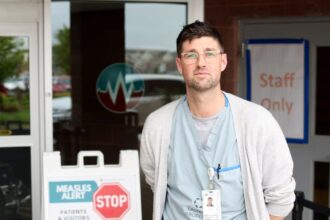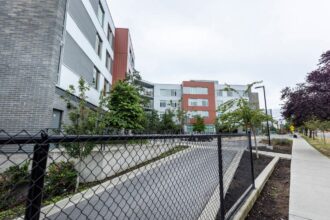In a significant development for British Columbia’s healthcare landscape, the province has officially launched its comprehensive primary care review, fulfilling a critical component of the confidence and supply agreement between the governing NDP and the Green Party. This extensive evaluation aims to address mounting concerns over healthcare accessibility, physician shortages, and the effectiveness of current primary care networks across the province.
The review, which commenced earlier this month, represents more than a mere political obligation—it stands as a potential turning point for a system under unprecedented strain. With nearly one million British Columbians lacking access to a family doctor, the stakes couldn’t be higher for Health Minister Adrian Dix and his ministry.
“This isn’t simply about ticking boxes on a political agreement,” said Dr. Jennifer Lush, president of Doctors of BC. “We’re witnessing a fundamental reexamination of how primary care is delivered across our communities. The current model has left too many patients without consistent care and too many physicians overwhelmed.”
The review panel, composed of healthcare professionals, policy experts, and patient advocates, will evaluate the performance of the primary care networks introduced in 2018. These networks, which represent a $1.2 billion investment over the past five years, were designed to improve access by bringing together doctors, nurse practitioners, and other healthcare professionals under collaborative models.
According to Ministry of Health data, despite this substantial investment, emergency room visits for non-urgent matters have increased by 18% since 2019, suggesting the networks haven’t fully achieved their intended goal of diverting patients from hospitals to appropriate primary care settings.
Green Party leader Sonia Furstenau, who made the review a condition of her party’s continued support for the NDP government, emphasized the urgency of the situation. “We cannot continue with incremental changes when what we need is transformative reform. British Columbians deserve a primary care system that actually meets their needs, regardless of where they live or their socioeconomic status.”
The review will examine alternative compensation models for physicians, integration of digital health technologies, and strategies to improve recruitment and retention of healthcare professionals in rural communities. A particular focus will be placed on Indigenous health services and how primary care can better serve First Nations communities.
Dr. Michael Wong, a family physician in Victoria who recently reduced his practice due to burnout, offered a frontline perspective: “Many of us entered medicine to build meaningful relationships with patients over time. The current system, with its administrative burden and fee-for-service model, makes this increasingly difficult. We need to reimagine how we structure and fund primary care if we want to attract and retain physicians.”
Public consultation sessions are scheduled throughout February and March in twelve communities across BC, from Prince George to Victoria. The ministry has also launched an online portal where residents can share their healthcare experiences and suggestions for improvement.
The findings and recommendations from the review are expected to be published in June, with implementation plans to follow in the fall. With a provincial election on the horizon in 2024, the review’s outcomes may significantly influence healthcare platforms across party lines.
As British Columbia grapples with these fundamental healthcare challenges, the central question remains: can this review transcend political considerations to deliver meaningful reform that reconnects British Columbians with accessible, continuous primary care? For the nearly one-fifth of provincial residents currently navigating the healthcare system without a family doctor, the answer cannot come soon enough.

























